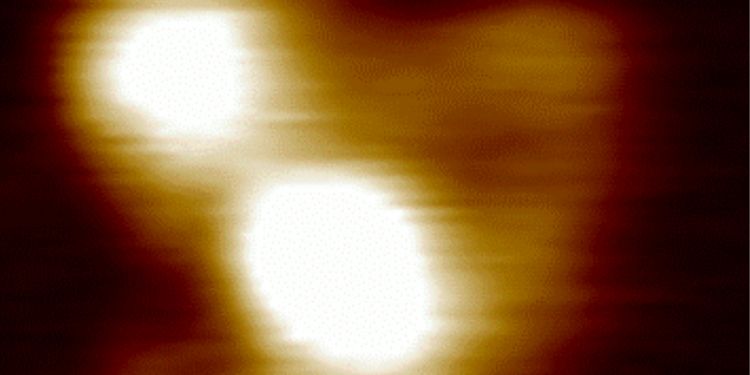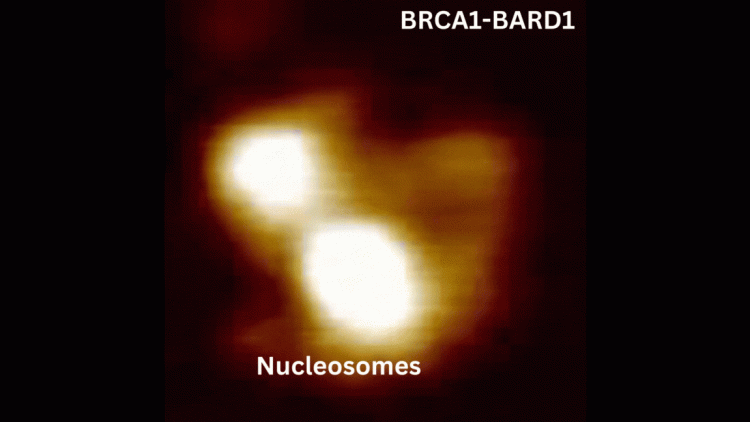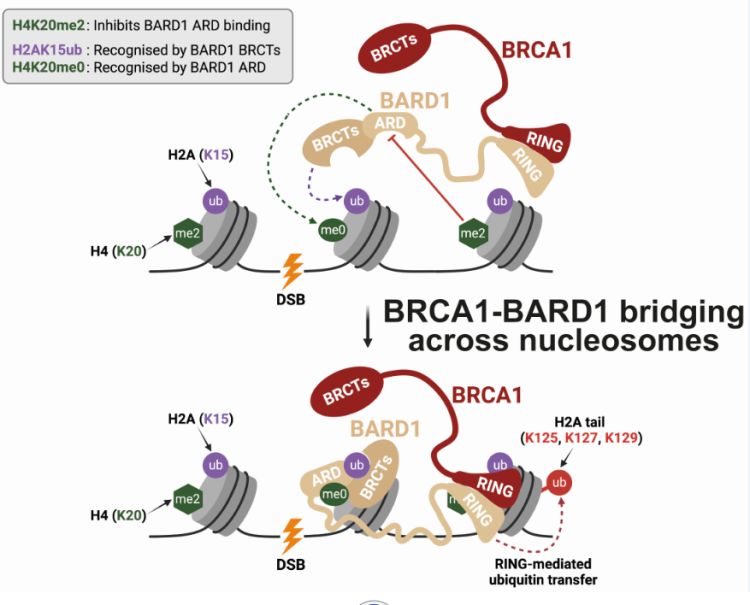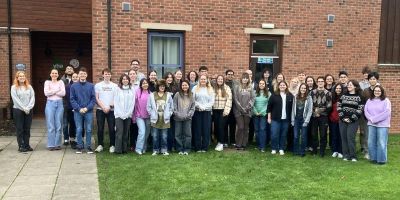How a tumour suppressor repairs DNA

For the first time, scientists have witnessed new molecular behaviour in proteins that protect us from cancer.
Scientists in the Faculty of Biological Sciences have identified new features of BRCA1–BARD1, a group of proteins that play a critical role in repairing damaged DNA.
Using ground-breaking imaging techniques, thanks to the state-of-the-art equipment at the Astbury and Bragg centres in the University of Leeds, researchers have witnessed BRCA1–BARD1 interacting with nucleosomes - the core units of our DNA - in unprecedented detail.
The paper, “BRCA1–BARD1 combines multiple chromatin recognition modules to bridge nascent nucleosomes,” funded by the Medical Research Council, Wellcome Trust and Basser Centre for BRCA, reveals real time images of BRCA1-BARD1 bridging across multiple nucleosomes.
This new knowledge explains how BRCA1–BARD1 can “read” specific marks - modifications that acts as “signposts” - to signal for DNA damage, such as the DNA breaks occurring in cancer.
“The BRCA1 and BARD1 proteins work together to repair damaged DNA in our bodies,” said Dr Martina Foglizzo, Research Fellow in the School of Molecular and Cellular Biology.
“BRCA1–BARD1 complex is particularly important for maintaining healthy cells, as this acts to suppress tumours by stopping cell growth or preventing them from dividing too quickly.”
Providing a better understanding of how BRCA1–BARD1 functions in cells has a huge potential in supporting the development of future cancer treatments.

GIF description: Real time view of BRCA1-BARD1 engaging the core units of our DNA (nucleosomes). Credit: Dr George Heath
BRCA1
BRCA1 is a gene that plays a crucial role in preventing the development of certain types of cancer. It helps maintain the normal function of cells and prevents them from growing uncontrollably. When there are changes or mutations in the BRCA1 gene, these can increase the risk of cancer, particularly ovarian and breast cancers.
Commenting on the study, collaborator Dr Marcus Wilson from the Wellcome Centre for Cell Biology at University of Edinburgh said:
“Understanding the biochemical fundamentals of how BRCA1-BARD1 functions is a critical step to learn more about how our cells deal with DNA damage, and how this may go wrong in patients.”
Roger Greenberg, MD, PhD, director of Basic Science at Penn Medicine’s Basser Center for BRCA, which helped fund the study, said:
“By revealing the molecular mechanisms that underpin how these proteins recognize DNA damage sites, this research can reveal the basis for how BRCA1-BARD1 can maintain genome integrity. It may also offer insights into restoring function to mutated forms of BRCA1 to prevent these types of cancers in the future.”
“It is really fascinating to view individual BRCA1 molecules in real time and follow their movements, watching them dance around and engage with their interacting partners. It was amazing to see BRCA in action at such detail,” added Prof. Elton Zeqiraj a Wellcome Trust Senior Research Fellow and Professor of Structural Biology in the School of Molecular and Cellular Biology.
This has never been done before.
Image description: The process of BRCA1-BARD1 bridging across nucleosomes.
The paper can be read in Nucleic Acids Research.





